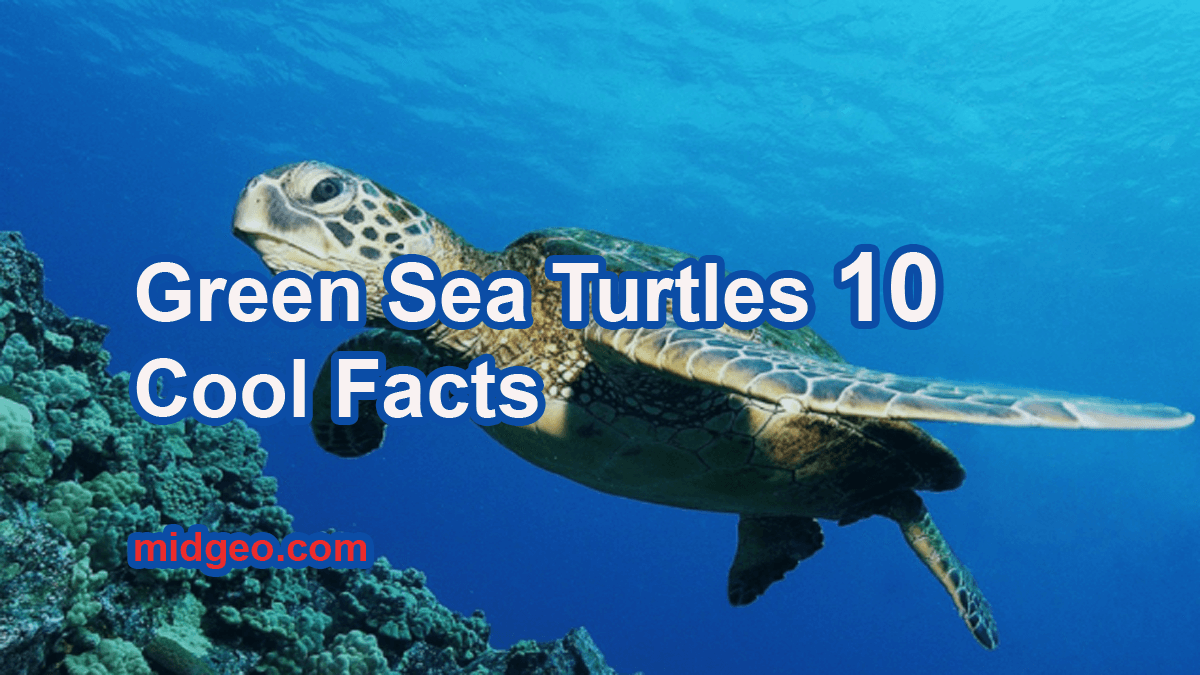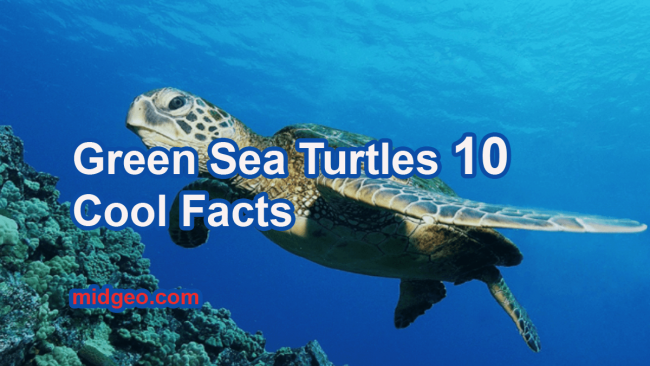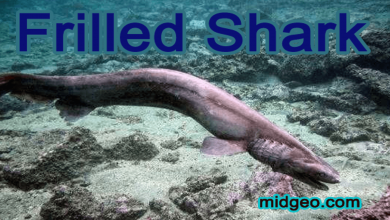10 Cool Facts About Green Sea Turtles – Endangered Marine Animals

The Green Sea Turtle (Chehia mydas) is one of the few economically significant reptiles. It has long attracted human attention across its circumglobal habitat in warm waters.
The green sea turtle was given its name because of the greenish tint of its fat and cartilage, not because of the color of its shell.
- Sea Bunny Slug Facts & Cute Secrets: Discover the Tiny Ocean Creatures That Look Like Fluffy Rabbits
- World Whale Day 2024: Celebrating These Magnificent Creatures
- Celebrating National Polar Bear Day 2024: Raising Awareness for the Arctic Icon
- What is the Cutest Deep Sea Creature?
- Red Parrot Fish Information For First
While the species is arguably best known for the Turtle soup derived from its fat, the edible flesh, and eggs of the species typically provide it regional importance anywhere it appears.
But believe it or not Sea turtles can live up to 80 years and can be found in oceans all over the world (except in the planet’s extreme north and south).

Six sea turtle species are listed as undermined or endangered, including the green, Kemp’s ridley, leather back, olive ridley hawksbill, and flat back. loggerhead, which is exclusively found in Australia, is declared endangered by the country.
Mid Geo
In this, I talk about endangered marine animals “Green Sea Turtles”.
Green Sea Turtles
The green sea turtle also known as the green turtle, black sea turtle, or Pacific Green turtle. It is the only species in the genus Chelonia.It has a global distribution that includes tropical and subtropical seas, with two separate populations in the Atlantic and Pacific oceans, as well as the Indian Ocean.
The common name alludes to the green fat located beneath its carapace, not to the olive to black color of its carapace.
This sea turtle’s dorsal ventrally flattened body is covered by a large teardrop shaped carapace. Its flippers are big and paddle-like.
It is normally pale in color, yet sections of the carapace in eastern Pacific populations can be almost black.
Green sea turtles are the only herbivorous sea turtles, feeding on sea-grass and algae as adults.
10 Fun Facts About Green Sea Turtles
Here are 10 Fun Facts Green Sea Turtle Facts that you might not know.
- Green sea turtles are found predominantly in the tropical parts of the Atlantic, Pacific, and Indian Oceans.
- Adult Green Turtles can reach a length of 1.5 to 2 meters (5-6 feet). Individuals weighing up to 315-317 kilograms (690 -700 lb) have been caught, but the average weight of adult individuals is 110–190 kilograms (240–420 lb).
- The lifespan of a Green Turtle is 85-100 years.
- With the exception of their head and four flippers, they have a robust, tear-drop-shaped shell called a ‘carapace’ that covers the majority of their body.
- Green sea turtles graze on the seagrass beds that grow in shallow seas throughout the day. They sleep on the shallow bottom at night and occasionally on stony ledges above the water.
- Green Turtle females between the ages of 20 and 50 mates every 2 to 5 years.
- Predation is a problem for sea turtles throughout their lives, but it is especially bad during the first two years. Green sea turtle eggs and hatchlings are eaten by foxes, weasels, cats, dogs, raccoons, crabs, and other creatures. Juveniles and adults are prey for sharks and other large fish.
- Worms, immature crustaceans, aquatic species, grasses, and algae are eaten by hatchlings less than 8 to 10 inches in length. Green turtles, the only marine turtle that is completely herbivorous as an adult, eat seagrass and algae until they reach 8 to 10 inches in length.
- Turtles move from nesting locations to feeding places that can be thousands of miles apart. Although most turtles migrate along coastlines, some populations have been found to move across the ocean from their breeding areas to feeding grounds.
- Green sea turtles are more likely than any other turtle species to suffer Fibropapillomatosis, a tumor-forming condition that is often fatal. Green sea turtles are more susceptible to the disease, according to researchers, because they graze in particularly dirty environments.
Young green turtles remain their summers in New England seas, despite the fact that they pass most of their time in warmer waters.
Green Sea Turtles – Endangered Marine Animals
Why are Green Sea Turtles Endangered?
Green turtles are threatened by a variety of factors. Turtle eggs are eaten by humans, and over harvesting has led the population to dwindle over time.
Due to trapping in fishing gear, reduction of nesting grounds, loss of feeding places, poaching, and ocean pollution, sea turtles and other marine animals are threatened or endangered.

Sea turtles and many other sea animals are at risk of becoming sick or dying as a result of eating plastic garbage in the water, according to a 2013 study. Leatherback and green sea turtles are the most at risk of becoming sick or dying as a result of eating plastic.
Plastic trash was identified in the digestive tracts of 51% of loggerhead turtles in a 1993 study, and necropsies of dead turtles found some with their whole digestive tracts stuffed with fragments of plastic bags.
A turtle can kill by even a small bit of plastic. Small particles of food can become stuck in their stomachs, preventing them from swallowing. In addition, plastic can trap gas inside the turtle’s body, causing the turtle to float. This causes them starved or makes them easy prey for predators.
Green turtles are protected under the Endangered Species Act.
FAQ About Green Sea Turtle
What is special about green sea turtles?
Green sea turtles are one of the world’s largest turtle species, reaching 65-130 kilograms and averaging 1-1.2 meters in length. Except for their head and four flippers, they have a tough, tear-drop-shaped shell called a ‘carapace’ that covers most of their body.
What is a green sea turtles behavior?
Green sea turtles are known to be solitary, but they do periodically congregate in shallow seas rich in seagrass or algae to feed. Hawksbill and green turtles frequently return to the same area to sleep each night.
How do communicate green sea turtles?
During courting, female and male green sea turtles communicate through a variety of visual and tactile signals (such as caressing). Turtles have also been known to communicate with one another by squirting water and blinking. Biting is a unique communication strategy used by turtles.
Do green sea turtles make sounds?
Even though turtles lack voice chords, they can nonetheless make sounds. Some turtles emit a high-pitched wailing sound, while others cluck.
Conclusion,
Hope you enjoy Endangered Green Sea Turtle facts, let me know your thoughts down below in the comment box if you have any.
I mean, what else can we say?
Poor Green Sea Turtles, thank you so much for staying out with me today.





